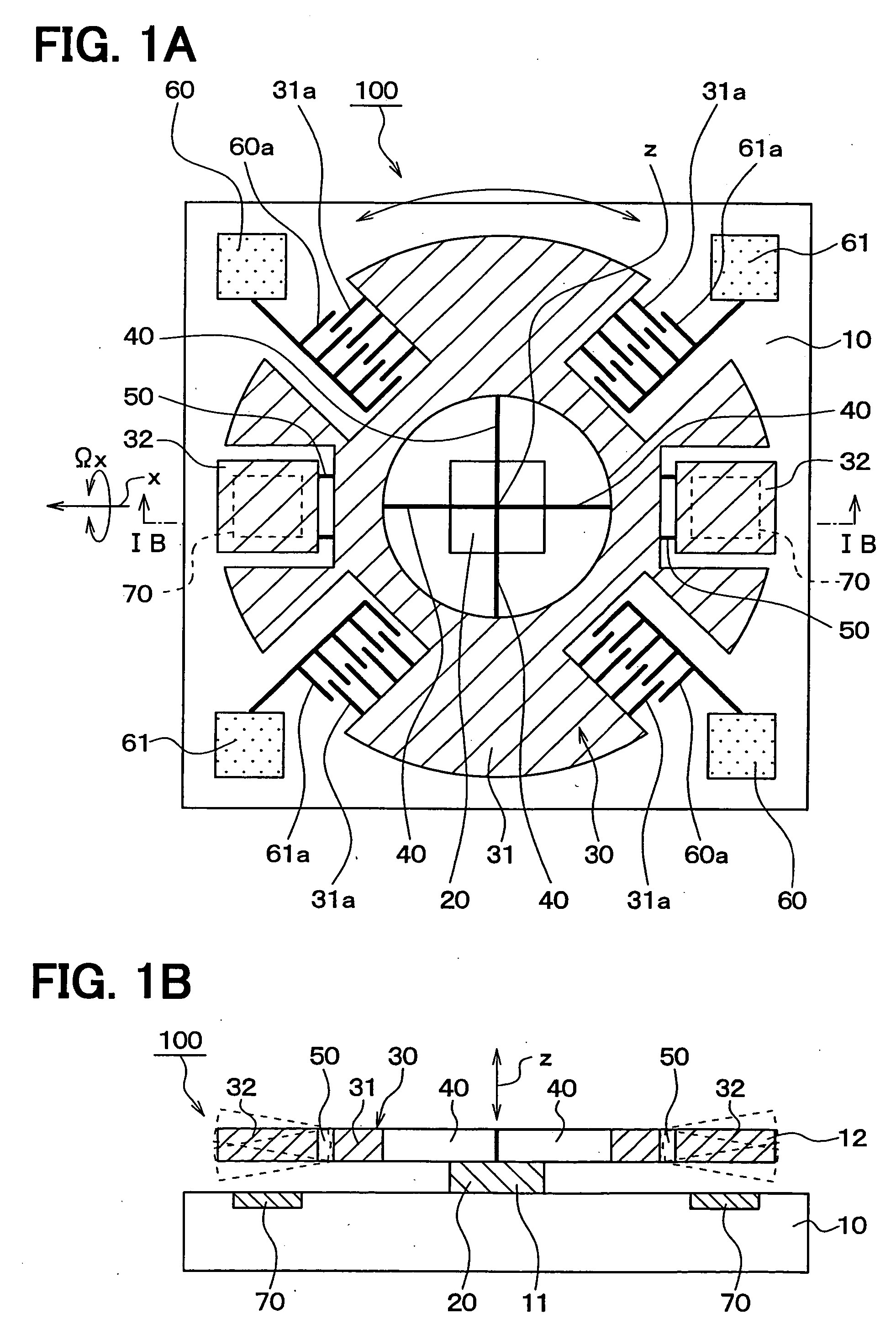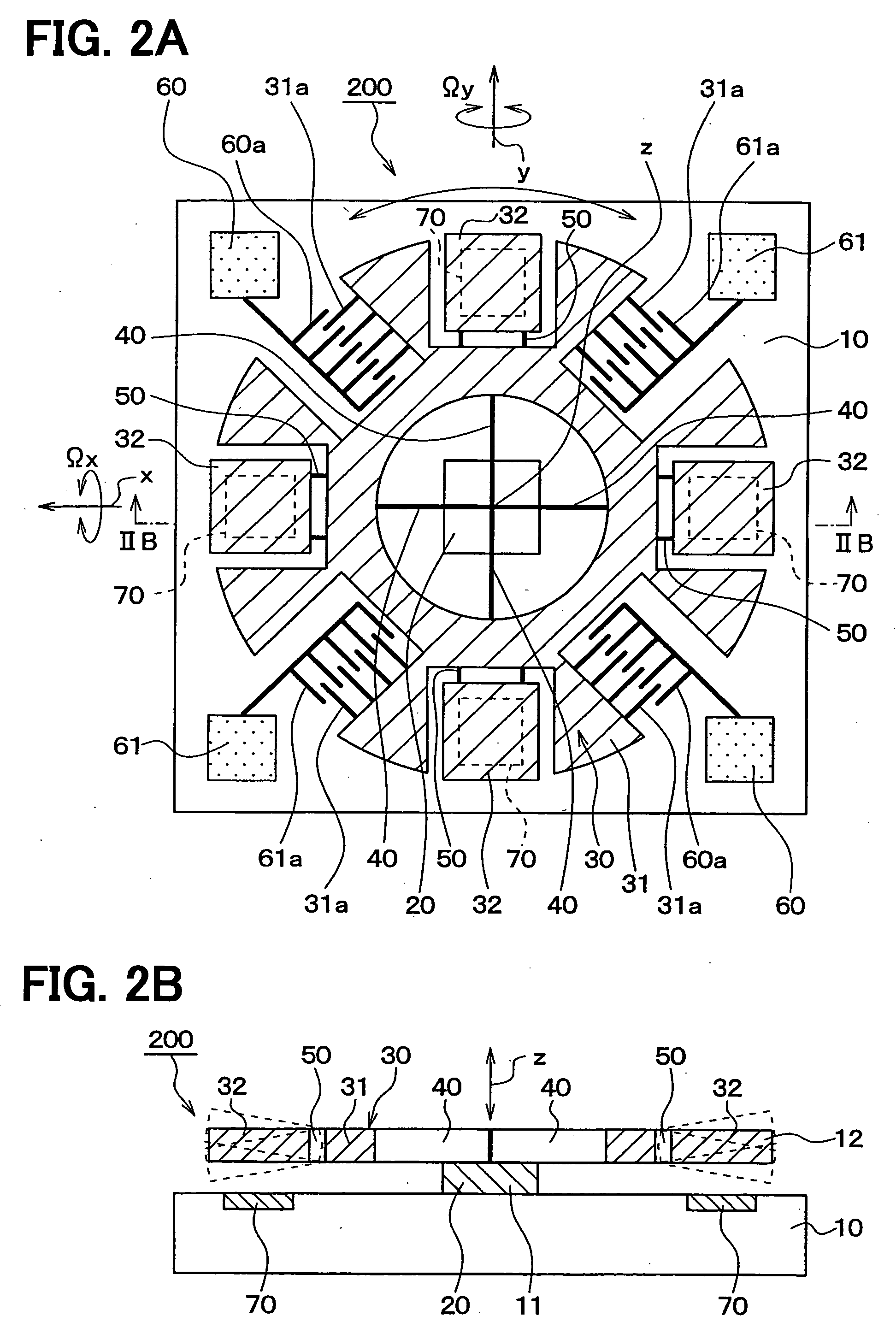Angular velocity detector having inertial mass oscillating in rotational direction
a technology of inertial mass and detector, which is applied in the direction of acceleration measurement using interia forces, turn-sensitive devices, instruments, etc., can solve the problems of difficult to make driving beams, unavoidable angular velocity detector structure, etc., and achieve the effect of easy design and manufactur
- Summary
- Abstract
- Description
- Claims
- Application Information
AI Technical Summary
Benefits of technology
Problems solved by technology
Method used
Image
Examples
Embodiment Construction
[0024] A first embodiment of the present invention will be described with reference to FIGS. 1A and 1B showing a plan view and a cross-sectional view of an angular velocity detector 100 of the present invention, respectively. Hatching in FIG. 1A does not mean a cross-section but shows a top plane of components. In order to clearly differentiate an inertial mass 30 from driving electrodes 60, 61, the former is hatched and the latter is dotted.
[0025] The angular velocity detector 100 is manufactured from a three-layer plate composed of a substrate 10, a sacrifice layer 11 such as a silicon oxide layer and a semiconductor layer 12 such as an epitaxial poly-silicone layer, laminated in this order. The detector 100 is manufactured by known semiconductor processing technologies. Portions of the sacrifice layer 11 are removed by etching to separate an inertial mass 30 from the substrate 10. Alternatively, the angular velocity detector 100 may be manufactured from a silicon-on-insulator su...
PUM
 Login to View More
Login to View More Abstract
Description
Claims
Application Information
 Login to View More
Login to View More - R&D
- Intellectual Property
- Life Sciences
- Materials
- Tech Scout
- Unparalleled Data Quality
- Higher Quality Content
- 60% Fewer Hallucinations
Browse by: Latest US Patents, China's latest patents, Technical Efficacy Thesaurus, Application Domain, Technology Topic, Popular Technical Reports.
© 2025 PatSnap. All rights reserved.Legal|Privacy policy|Modern Slavery Act Transparency Statement|Sitemap|About US| Contact US: help@patsnap.com



